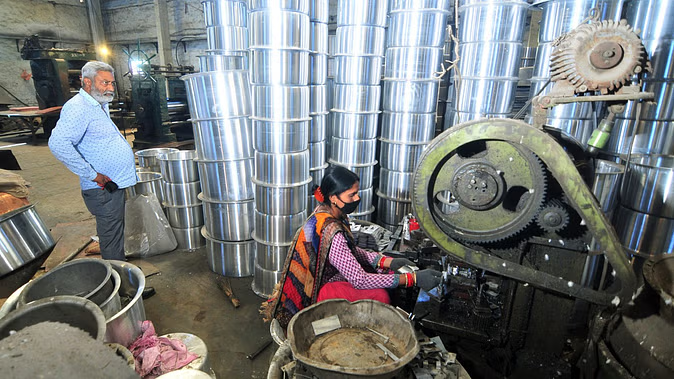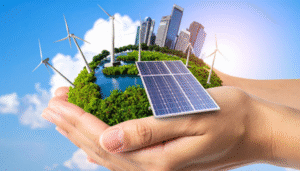Budget 2025 Expectations: Tax concession possible to increase consumption and growth rates, emphasis on job creation

New Delhi| Amidst global and domestic uncertainties, Finance Minister Nirmala Sitharaman will present the budget for the financial year 2025-26 on Saturday, February 1. In terms of economic data, this is being considered as the most difficult budget of the Narendra Modi government so far. There are many reasons for this. Inflation and especially high food inflation have affected the savings of families. Rupee is continuously falling. The results of the companies were not as expected. Foreign investors are continuously withdrawing money from domestic stock markets. The pace of consumption has slowed down for several quarters, due to which the pace of the economy slowed down to a near two-year low of 5.4 percent in the second quarter of the current financial year. With this, a new challenge has arisen before the country in the form of US President Donald Trump, who has warned of imposing tariffs on imports.
Some interesting facts related to the Union Budget-
The first general budget of independent India was presented by the first Finance Minister R. K. Shanmukham Chetty on November 26, 1947.
Morarji Desai has presented the budget a total of 10 times as Finance Minister during the tenure of Prime Minister Jawaharlal Nehru and later PM Lal Bahadur Shastri.

Big challenges on the economic front-
1. Inflation has increased, rupee is continuously falling, foreign investors are withdrawing money
2. The unemployment rate, which stood at 6.6%, is aimed at bringing the fiscal deficit below 4.5% in the July-September period
3. The growth rate could be 6.4% in 2024-25, the lowest in 4 years
Economist Dr. Sharad Kohli says that the pace of India’s GDP, the shining star of the world, has slowed down, about which the Finance Ministry is worried. Important measure to address this concern without giving up fiscal restraint…Increase consumption. To increase consumption, money will have to be put in people’s pockets. Employment will also have to be increased. Best way to…Tax relief should be given to income taxpayers. Tax savings will put money in their pockets and they will spend more further. This will not only run shopkeeping, but will also increase the demand for products and factories will run, so people will get employment, the positive effect of which will be seen in the growth rate of the economy.
Income tax: 30% slab may increase in scope
The new tax system is close to the heart of the Modi government. This system can be made attractive to increase consumption. For this the government can amend the tax slab. The basic exemption limit can be increased to Rs 5 lakh. This can lead to an income tax-free of up to Rs 10 lakh annually with a rebate of up to Rs 25,000 under Rs 75,000 Standard Deduction and 87A. Currently, there is no tax on annual earnings up to Rs 7.50 lakh.
5.27 crore taxpayers have opted for the new tax regime
Standard deduction has been increased to Rs 75,000 in the last budget.
Economist Dr. Kohli says that the definition of middle class has changed with the increase in inflation and expenses. It’s time you called someone who earns 1.5 million rich. Therefore, the government should widen the scope of the maximum tax slab of 30 per cent under the new tax regime and include those earning more than Rs 20 lakh.
Government preparing to gradually dismantle the old tax system; slabs of 25% could then be added
Tax experts believe the government could reintroduce a tax slab of 25 per cent into the new tax regime, which was removed last year. This can cover earnings ranging from Rs 15 lakh to Rs 20 lakh. This will increase the disposable income of taxpayers.
Not much impact on fiscal costs
Astha Gudwani, Chief Economist (India), Barclays, says that in an effort to support private consumption, the Finance Minister should take measures like changing the tax slabs and effectively cutting the personal income tax rate. This will speed up tax collection, which will compensate for the decline in revenue. There is no possibility of fiscal cost increasing much.

Woman: Trying to give profit through capital expenditure
The government will continue to focus on promoting infrastructure development and emphasizing women, farmers and the underprivileged through skills, welfare measures and financial means. The significant increase in capital spending, with key focus areas to include infrastructure projects such as roads, water supply systems and social welfare initiatives, is expected to prioritize development. Women and youth will benefit the most from this.
Funds can be increased for women-centric schemes like Mission Shakti, Matru Vandana Yojana and Janani Suraksha Yojana. These programs aimed at empowering women through protection, education and maternal recovery may receive higher budgets. In the last budget, a huge amount of Rs 3 lakh crore was given for these schemes.
Hospitality: Investment necessary to promote tourism
To promote tourism in the country, the infrastructure in the hospitality sector will have to be improved. Along with rationalization of tax rates, there is also a need to promote easier visa process and investment. Hotel Association of India (HAI) President KB Kachru said, there may be necessary announcements in the budget towards creating necessary infrastructure to attract tourists globally.
HAI Chairman said, the government alone cannot invest. The private sector will also have to come forward. State governments should consider giving more incentives. Countries like Japan, South Korea and Thailand are able to increase their GDP by giving importance to the tourism sector.

Youth education: Efforts to provide employment through skill development
To achieve the goal of a developed India, further strengthen Make in India and prepare the youth for the needs of the industry, attention will have to be paid to innovation in the education sector. Emphasis on skill development is also important, so that we can prepare the workforce according to the needs of the world. Experts say, there are a large number of jobs available in the country. But, due to lack of skills among the youth, companies are taking precautions in appointments. This is also a big obstacle in the way of becoming an alternative to China.
Warren Harris, CEO and MD, Tata Technologies, says that there is a need to increase the allocation on skill development to prepare the youth according to the needs of the industry. This will create a ready workforce capable of achieving excellence in advanced technologies such as Artificial Intelligence, Internant of Things and Cyber Security.
Farmers: Possible 15 per cent increase in the agricultural budget
To increase the income of farmers, the expenditure for agriculture sector can be increased by about 15 percent to Rs 1.73 lakh crore. Right now it is Rs 1.52 lakh crore. This is the biggest increase in six years. Some announcements may also be made to develop high yielding seed varieties, enhance storage and supply infrastructure and promote production of pulses crops, oilseeds, vegetables and dairy products.
It is also expected to increase the limit of subsidized agricultural loans from Rs 3 lakh to Rs 5 lakh and expand crop insurance.
The agricultural sector employs 45%; contributing 15% to the economy
There could be an increase of 1.23 lakh crore in the budget of the Agriculture Ministry and more expenditure on research to develop new varieties, which is currently Rs 9,941 crore. The government is not only trying to increase domestic supply, but is also working to increase agricultural exports from the current $50 billion to $80 billion by 2030. Agriculture employs about 45 per cent of the workforce. Contributes 15 per cent to GDP.
Inflation is an obstacle in the path of poverty free India
Inflation has long been a major challenge for the economy. Retail inflation in 2024 has been above the RBI target of four per cent, except for two months due to rising food prices. In October, 2024, it had risen to a 14-month high of 6.21 percent. Food inflation had reached a high of 10.84 per cent and vegetable inflation of 42.18 per cent. The surprising thing is that the inflation which RBI has kept the repo rate stable at 6.50 percent for the last two years citing controlling it is still affecting the domestic budget of the common people. Citing inflation, RBI has not changed the repo rate for two years. The inflation rate of vegetables had reached a high level of 42.18%.
Retail inflation was 6.21% in October, the highest in 14 months
Deloy’s economist Dr. Rumki Majumdar says that measures to control inflation will definitely be discussed in the budget. These measures are also necessary in the context of Prime Minister Narendra Modi’s address to the Developed India Young Leaders Dialogue-2025, in which he said that the day is not far when the whole of India will be free from poverty. It is also necessary to control inflation, so that those 250 million people who have come out of the Multidimensional Poverty Index in the last 10 years are not trapped in the quagmire of poverty again.
Cheap housing: consideration of a ceiling of up to 6.5 million
The current GST concession limit for cheap housing is fixed at Rs 45 lakh with the prices of residential properties rising sharply in recent years. This time it could be increased to between 50 and 6.5 million. RBI’s definition of priority sector for housing loans may also be updated for the new limit. In view of rising inflation over a decade, the definitions of Economically Weaker Section (EWS) and Low Income Group (LIG) can also be updated. The increase from three lakh to five lakh for EWS and from 6 lakh to 9 lakh for LIG will create new demand. The existing income tax deduction of Rs 2 lakh on home loan interest can also be increased this time.
MSME: If concessions are given through higher tariffs, the pace will increase
Micro, Small and Medium Enterprises (MSMEs) are expecting a big relief. Indeed, the input costs and production costs of these industries, which are already struggling amid a slowdown in exports, are rising due to high tariff and non-tariff barriers. The Federation of Micro and Small and Medium Enterprises met with the Finance Minister to discuss the emergence of non-tariff barriers on critical raw materials and increasing tariff barriers (high import duties, anti-dumping duties, safeguard duties) on materials such as steel, copper, aluminum and polymers. Creating uncompetitive environment. Although they are aimed at protecting domestic producers, the consequences are harmful. This industry contributes 30 per cent of GDP. 24 million get employment.
This industry contributes 30% to GDP
For example, bicycle manufacturing is a high value added production, but if imports become expensive, it will affect the competitiveness of the domestic bicycle manufacturing industry. Just two days before the presentation of the budget, the government on Wednesday approved the launch of a new credit guarantee scheme for the industry, which was announced in the last budget. Under this scheme, credit guarantee will be given to institutions giving loans for credit facilities up to Rs 100 crore to MSMEs eligible for purchase of equipment and machinery.









